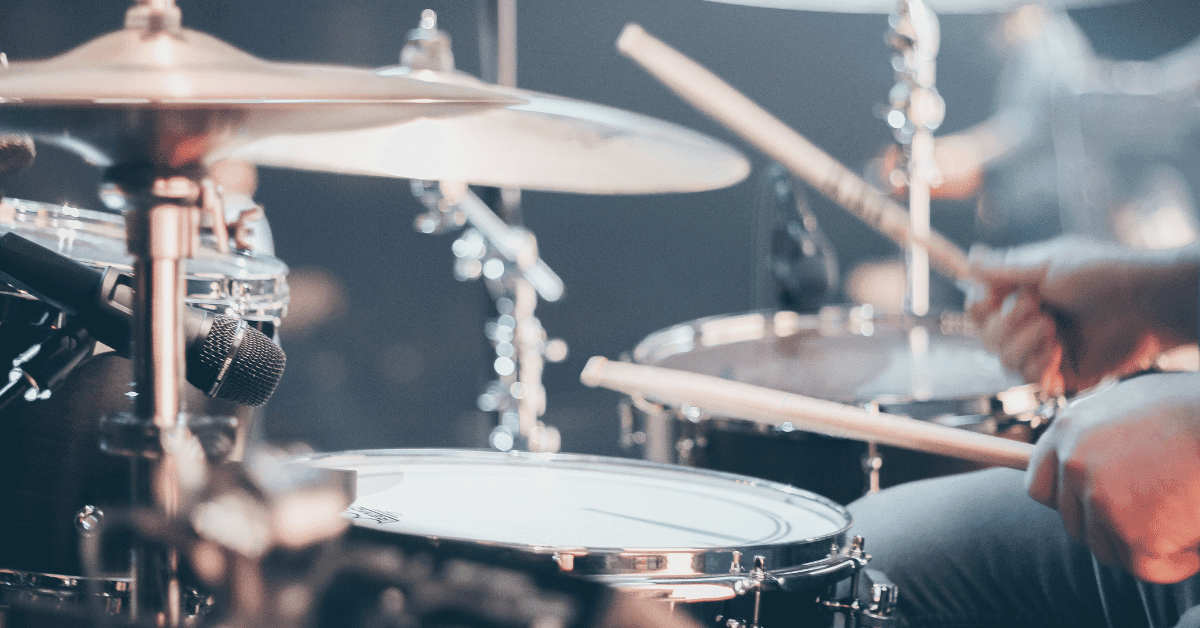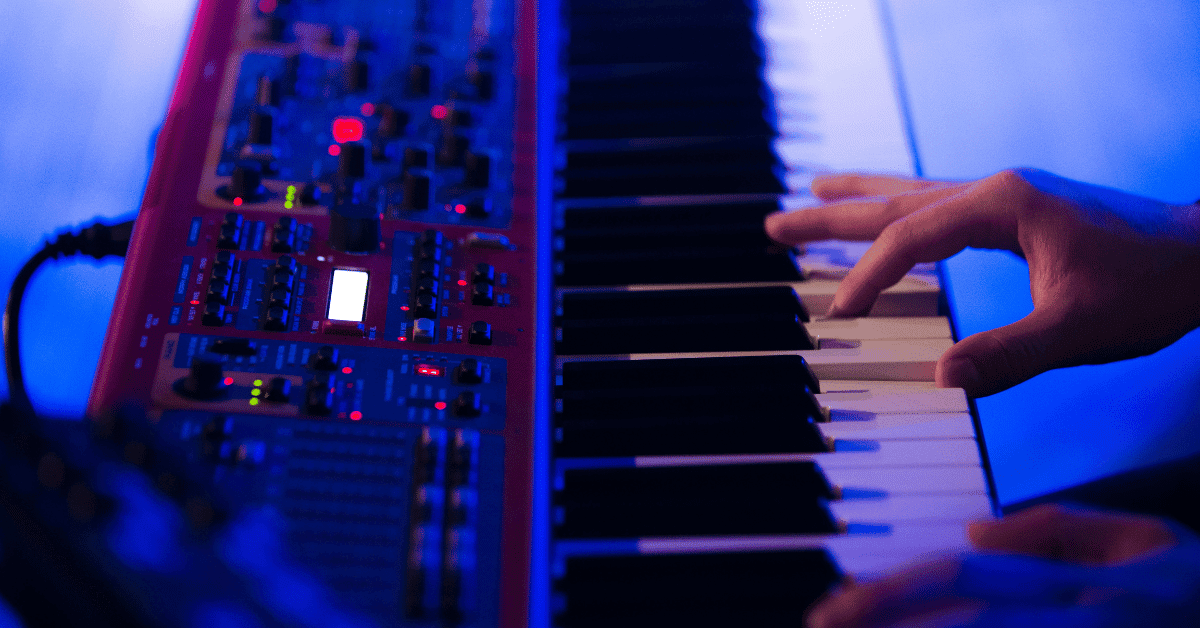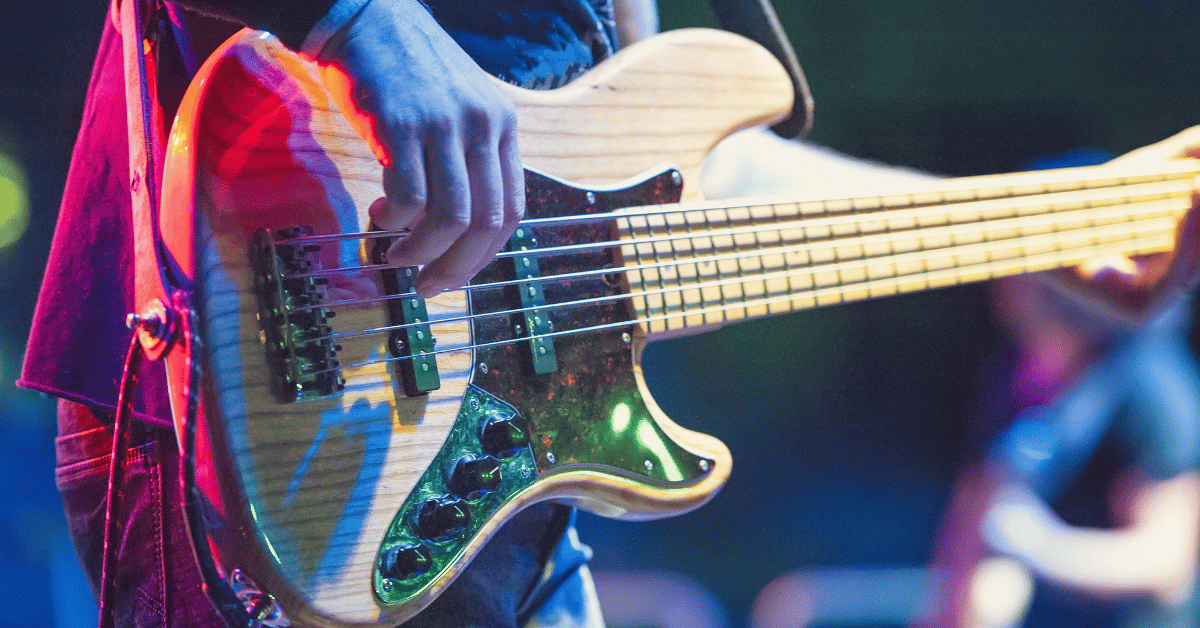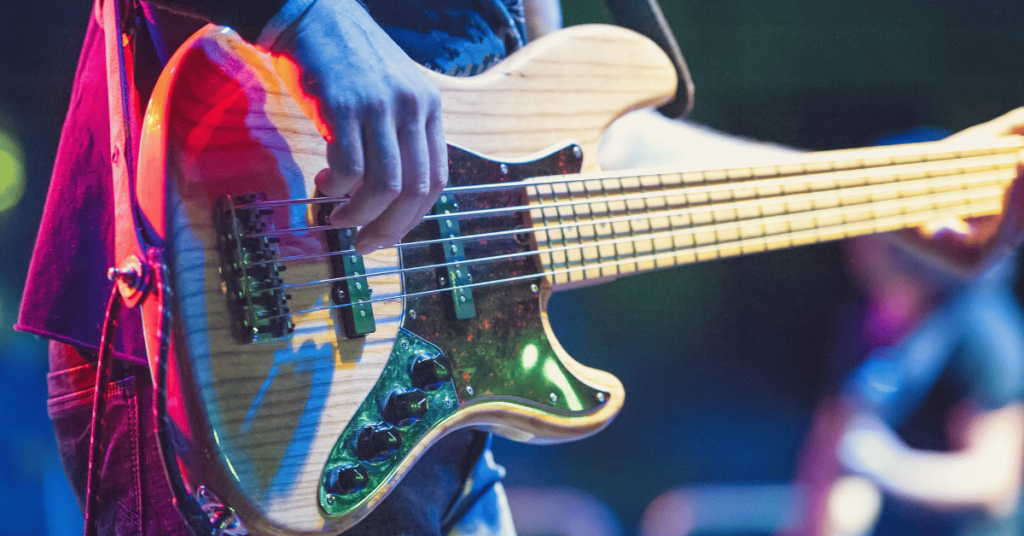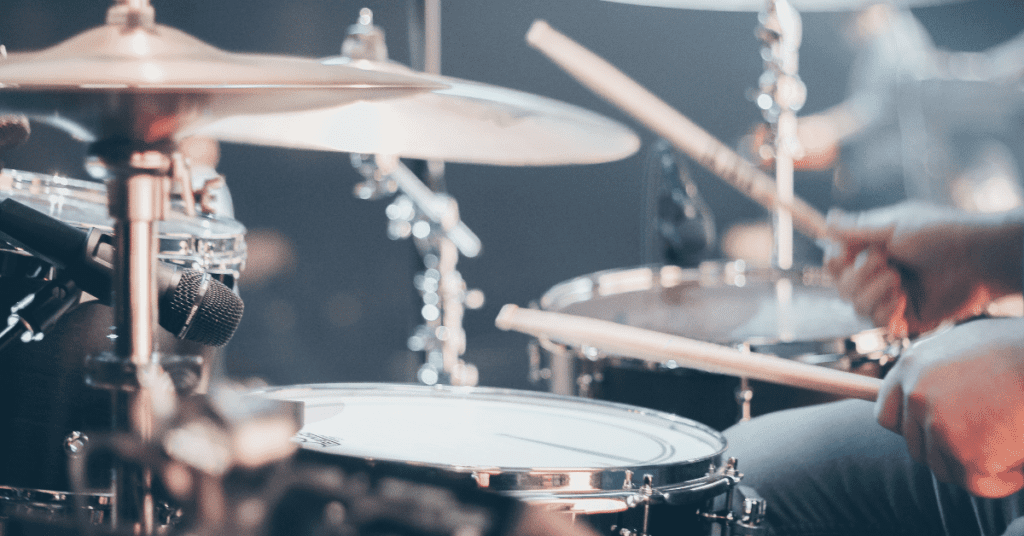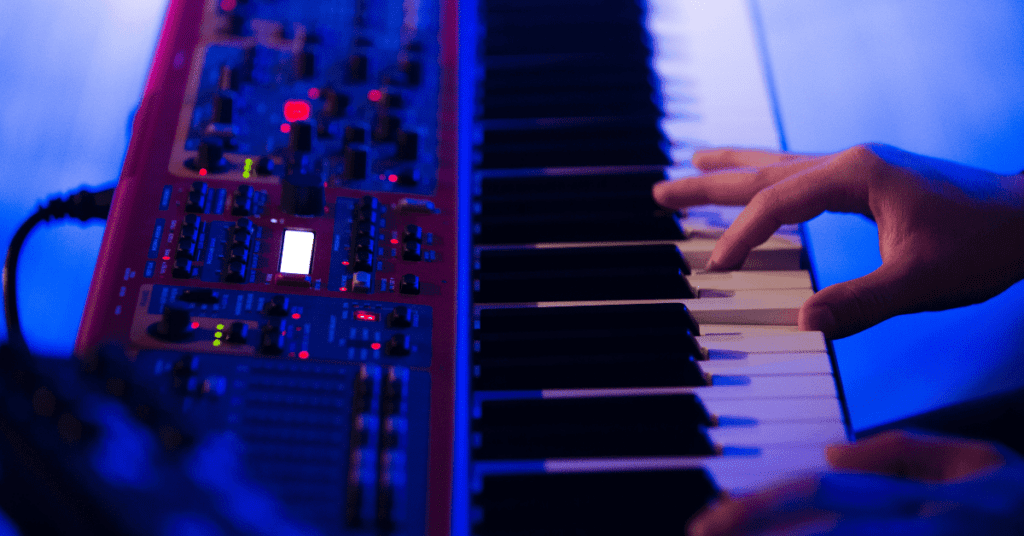Worship guitar is a style of its own…
Do you want to know what the worship guitarists from Hillsong, Bethel, Elevation Worship, Matt Redman, and Kari Jobe all have in common? Well here at Worship Online, we have the unique opportunity to have these amazing musicians as part of our team of worship guitar instructors.
So for this article, we did some serious research and went through the back catalog of our tutorials, lessons, and advice from over the years, to compile what they ALL have in common.
Out of this research came the ultimate blueprint for worship guitar. It’s called the 11 Golden Rules For Worship Guitarists. These are the things that our instructors and I find ourselves talking about, and referring to, quite often. Along with some not so talked about things that we found separate a good worship guitarist from a a great one.
If you play worship guitar, burn these things into your brain and refer to them often as you play and rehearse.
Why You Need To Up 👆 Your Worship Guitar Game
Learning to play worship guitar properly is a critical part of being a guitarist on a worship team. Playing guitar in a worship setting is not just about playing the right chords and notes, it’s about leading people in worship and creating an atmosphere of reverence and awe.
When you play worship guitar properly, you are able to effectively communicate the message of the songs and help the congregation connect with the lyrics on a deeper level. Additionally, playing worship guitar properly allows you to blend seamlessly with the rest of the band. This creates a cohesive sound that elevates the overall worship experience.
When the guitar playing is executed well it can help to elevate the energy and the atmosphere of the congregation, leading to a more meaningful worship experience. This is very different than playing guitar in a secular setting for the sake of the show.
It’s very important to put in the time and effort to learn to play worship guitar properly to be able to effectively serve the congregation and lead them in worship.
The 11 Golden Rules For Worship Guitarists
1. Play The Guitar Parts As Close To The Original As Possible
This rule is first because if you do this, you’re already ahead of the game! All of the following rules will fall into place if you simply do this. (There are times when it’s ok to play it differently, but start with a base and understanding of the original parts and work from there.)
There is an art and humbleness it takes to learn a song like the original. There’s a reason these artists are renowned for worship music. Because they know how to write parts that enhance worship and not detract from it.
There’s no excuse to not be doing this. Now you can learn the exact guitar parts from the album, in half the time! Even if you can’t play by ear. To learn more, check out Worship Online and try it for yourself.
2. Play Electric Guitar Instead Of Acoustic
Now I’m not saying give up acoustic. What I’m saying is that if you’re going for a more massive “full band” sound, and you only have one other electric guitarist, or you’re the only guitarist, play electric. Instead of playing chords on an acoustic, grab an electric guitar, hook up an amp, and play the same chords that you would have on the acoustic.
Why? Because the electric is going to give your band a much more full sound. Acoustic is more of a percussive instrument that isn’t filling up much space or doing much for an overall full-band mix. Doing this will also free up your other electric guitarist to play some lead lines and add a whole new dynamic to the band.
Having dissected guitar parts for hundreds (if not thousands) of worship songs, I can tell you that the most contemporary worship music tends to not even have acoustic guitar in it. Many times a worship leader will play acoustic on a live recording, but they won’t even use it in the final mix of a song for the album.
And just a mixing tip, rarely should an acoustic be heard significantly in a mix if you’re going for a full band sound – unless it’s a quiet part of a song or you’re playing an intentionally acoustic-driven set.
3. Split The Guitar Parts Into Rhythm and Lead
This rule is assuming that there is no artist recording, it’s a song you wrote, or your guitarists just flat out don’t know how the original parts go. Unless you have spent some serious time writing creative parts that enhance the song and don’t get in the way or busy it up, split the two electric guitar parts into Rhythm and Lead. Especially if you’re only learning or rehearsing the song for the first time right before service.
Doing this ensures you are going to get the best sound. You don’t want both guitarists trying to play leads at the same time. Then no one is left giving the song some body with rhythm parts. So make sure it’s understood who is rhythm guitar and who is lead guitar.
If you use Worship Online guitar tutorials, you don’t have to worry about this. Our tutorials are split into “Electric 1” and “Electric 2.” We do this because many times both guitars are going to play some variation of a lead or some variation of a rhythm part.
It’s hardly ever just cut and dry. We can do it this way because guitarists from these bands (Hillsong, Bethel, Vertical Church…etc.) have spent some serious time writing creative parts.
Now sometimes, even if you have prepared parts, this is still the best way to go. Jesus Culture splits most of their parts by rhythm and lead. This is mainly because one electric guitarist is leading worship, but also because it’s great for worship music. More on this in rule 4.
Master Your Worship Guitar Tone With This Exclusive Course
For a limited time, we’re offering FREE access our Worship Guitar Tone Masterclass.
Your instructors for this course have played guitar for Kari Jobe, Cody Carnes, The Belonging Co., Matt Redman, Matt Maher, Chris Tomlin, Martin Smith, Israel Houghton, The Passion Band, and a ton more! They’re going in-depth with you to teach you exactly how to make your playing sound like the records you love.
Click here to learn how to get instant access!
4. Never Sacrifice Rhythm For Lead
This is what makes worship guitar rule number 3 so important. At least someone should be giving the song some substance. Now I say “someone” and not “guitarist,” because it’s possible for other instruments to fill up a song enough for a guitarist to play a lead part.
However, 90% of the time, it’s going to take a guitarist playing big open chords to really fill up a song. Unless you have a large band, but even Hillsong will have an electric guitarist just playing chords most of the time.
This also means that if you’re the only electric guitarist, you’re going to have to resist playing some of those leads in order to play something that’s going to make the band sound full. And for the love of everything good, do NOT solo!
What type of chords you play depends on the song and how well your other instruments (keyboard/synths) are filling up space. Just be aware of how the band sounds. If it seems empty or like it needs something more, give it some big open chords. This is especially important for full parts of a song like big choruses or bridges. It’s all about being conscious of how the band sounds.
If it’s an electronic song, you may want to play power chords or some three note chord inversions. Because in this instance, big open chords may muddy up or change the feel of the song. (Check out pretty much any of the Hillsong Y&F stuff on the site. Another one of my favorite electronic-driven songs is Risen by Covenant Worship.)
5. Don’t Be Afraid To Not Play
Verses and down parts of a song obviously can be left more “empty,” or even just strummed much softer. Remember to work the song dynamically. If you’re just full in playing big chords or something the whole time, it can get very “boring.” So don’t be afraid to sit out and give the song some space in quieter parts of a song.
A great musician not only knows when to play, but he knows when NOT to play.
I talk more in-depth about this, in this post.
6. You Can Never Go Wrong By Creating Tons Of Ambience
Playing worship guitar, we have a secret go-to weapon. Ambience! Especially if you have a smaller band without tons of keyboard sounds. At the beginning of softer songs, or during down parts, swells and ambience go a long way.
We’ve created a course on worship guitar effects and how to create some different ambient sounds. It’s 100% free too! Check it out here. You can find some cool textures and swells in tons of songs on Worship Online, but some of my favorites are For Your Glory And For Me, and Ever Be.
7. Think Simple
When coming up with a lead line, think simple. You never want to overcomplicate or make a song too busy. If you don’t know what to do in a song, assuming someone is already playing rhythm, start with a single note line with lots of delay and reverb. There’s a common joke joke that worship guitarists aren’t that skilled. However, I disagree. The majority of the time, the style of worship music, calls for simplicity.
Some of the best guitarist I know will shred your face off in the green room, but when playing live they play the most simple elegant parts. Remember this, great guitarists know WHERE to place a line. They play for the song, not for themselves.
Try to listen for melodies/something that will make the song “interesting.” Many times a lead line is a replication of, or very close to, the main vocal melody of a song. The lead line at the end of It Is Well by Bethel is a great example of this. And even the chorus line in Jesus I Come by Elevation Worship.
So don’t overcomplicate and think that someone always has to be playing a cool lead riff or something. Sitting back and letting the song “be the song” by doing something simple that gives the song some body, shows a lot of musical maturity.
8. NEVER Get In The Way Of The Vocals
Vocals, words, lyrics, and singing are how the congregation engages in worship (for the most part). Singing scripture, giving praises to God, making declarations, it’s all done through the vocals.
Vocals are key. In worship music, they are in charge. When it comes to worship guitar, never play something over the top of the vocals. For instance, a lead line that clashes with the melody. Or a solo! In everything you play (or not play), prepare or give way for the vocals.
9. There Is Nothing Wrong With Both Electrics Guitarists Playing The Same Thing
This isn’t a waste of a guitarist like some may think. Think of vocals. Vocalists aren’t always singing harmonies. Many times they are all singing the melody. This creates a large group or choir effect. If both electrics are playing big open chords, this can give the band a much larger and wider sound, and sometimes it’s precisely what is needed.
I love what the pre-chorus of You by Hillsong does. Both electrics play the exact same riff just before splitting off to parts in the large chorus.
10. Lead + Rhythm = Chord Inversions
Chord inversions/rhythm parts up higher on the neck are a great way to boost the sound of a song as well. I’d say at least half of the songs on Worship Online do some version of this. It’s a great way to have rhythm and lead parts without necessarily having the lead playing a riff or lead line that could get in the way of the song or melody.
It makes the song sound larger because you typically have someone playing big chords in the lower register, and then you have someone playing chords in a higher register (chord inversions).
The guitarists are playing complementing rhythm parts which can make the song sound more full, give it a creative feel, and you’re not getting in the way with “lead lines.” I’d say that Planetshakers does this in the choruses of most of their songs. One Thing Remains is a great example of both guitarists playing the same open chords, and then Electric 1 breaking to chord inversions in the big bridge part of the song.
11. The Goal Of Playing Worship Guitar Is To Enhance Worship
I’ve saved what might be the most important worship guitar rule for last. Don’t forget why you are there playing guitar with the worship band in the first place. You’re there to enhance the overall sound of your band. I mean if not, why would your worship leader bother to have you there? You’re not there to “jam,” or do your own thing. You’re there to serve the band. Now how well are you going to serve it?
Get access to our FREE 5 part video series on How Today’s Top Worship Guitarists Are Using Effects Pedals!


